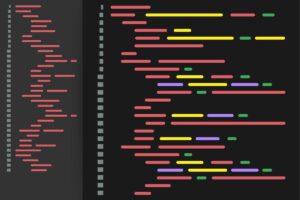In the realm of computer programming, understanding data structures is paramount. They are the backbone of efficient algorithms, enabling programmers to manage and process data effectively. Whether you’re diving into front-end development, back-end development, or aiming to master full-stack development, a solid grasp of data structures is crucial. This article delves into the techniques every programmer needs to harness the power of data structures, enhancing your coding education and setting you up for success in various programming projects.

The Importance of Data Structures in Programming
Data structures are essential tools that dictate how data is stored, organized, and manipulated. They provide the foundation for creating efficient algorithms, which are critical for solving complex problems in computer programming. When you engage in coding exercises or participate in coding challenges, your ability to choose and implement the right data structure can significantly impact your code’s performance and efficiency.
Understanding data structures is not just about memorizing different types, such as arrays, linked lists, stacks, or queues. It’s about comprehending their underlying principles and knowing when and how to use them in real-world applications. This knowledge is especially vital for software engineering, where efficient data handling can make the difference between a good and an exceptional piece of software.
Common Data Structures Every Programmer Should Know
- Arrays and Lists: These are the most basic data structures, used to store collections of data. Arrays are fixed in size, while lists can grow dynamically. Understanding how to manipulate arrays and lists is fundamental for any programming lesson or coding workshop.
- Stacks and Queues: Stacks operate on a Last In, First Out (LIFO) basis, while queues function on a First In, First Out (FIFO) basis. These structures are essential in scenarios where order and sequence of operations are critical, such as in parsing algorithms or managing tasks in a project.
- Trees: Trees are hierarchical data structures that are pivotal in scenarios like database indexing, file systems, and network routing algorithms. A common example is the binary search tree, which allows for efficient searching, insertion, and deletion operations.
- Hash Tables: These provide a way to map keys to values for efficient data retrieval. They are widely used in situations where quick access to data is required, such as in implementing dictionaries or caches in software engineering.
- Graphs: Graphs represent networks of connected nodes and are essential in solving problems related to social networks, computer networks, and even in game development. Mastery of graphs is crucial for advanced programming lessons and projects.
Techniques for Mastering Data Structures
- Practice Through Coding Exercises: The best way to master data structures is through regular practice. Engage in coding exercises that challenge you to implement and manipulate various data structures. This will not only reinforce your theoretical knowledge but also improve your problem-solving skills.
- Participate in Coding Workshops: Attending coding workshops provides hands-on experience and the opportunity to learn from experts. These workshops often focus on real-world applications of data structures, giving you insights into how they are used in professional software development.
- Work on Programming Projects: Applying data structures in real projects is one of the most effective ways to deepen your understanding. Whether it’s building a simple app or a complex system, integrating data structures into your programming projects will help you see their value and functionality.
- Explore Online Coding Tutorials: There are numerous online coding tutorials that specifically focus on data structures. These resources often break down complex concepts into manageable lessons, making it easier for you to grasp and apply them.
- Take an Algorithms Course: Data structures and algorithms go hand in hand. Enrolling in an algorithms course will give you a deeper understanding of how data structures are used to solve specific problems. This knowledge is critical for anyone looking to excel in coding challenges and software engineering.
The Role of Data Structures in Full-Stack Development
In full-stack development, the ability to work with both front-end and back-end systems requires a deep understanding of data structures. On the front-end, data structures are used to manage state, handle user inputs, and ensure that the user interface operates smoothly. On the back-end, they are essential for managing databases, optimizing server responses, and ensuring that data is processed efficiently.
For example, in back-end development, you might use a hash table to implement a cache system that reduces database queries, speeding up your application’s response time. In front-end development, arrays and lists are often used to manage dynamic content, such as updating a list of items without refreshing the entire page.

Mastering data structures is a vital part of becoming a proficient programmer. Whether you’re just beginning your coding education or you’re an experienced developer looking to refine your skills, understanding and effectively using data structures will give you a significant advantage. By practicing coding exercises, participating in workshops, and working on real-world projects, you can harness the power of data structures and elevate your programming capabilities.




